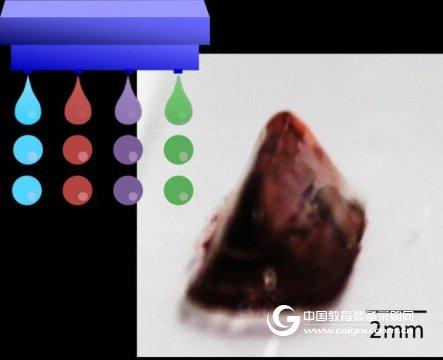Making 3D bioprinting easier Osaka University has found this method
Guide Although it looks like science fiction, 3D bioprinting can replace human organs and is rapidly becoming a reality, which may make a huge contribution to regenerative medicine. However, before the real application, "biological printing" still faces many technical challenges. How to make the operation easier? Researchers at Osaka University have discovered a way to use special enzymes to stick bio-drops together. Compared to the printing technology of non-biological materials, 3D bioprinting is still difficult due to the complexity of its raw materials (living biological cells) and the preset application in the human body (replacement or complementation of defective tissues or organs in patients). relatively bigger. These factors, including printing aids, cells to be printed, rational allocation of cell growth and differentiation factors, and supplementation of cell nutrients, should be reasonably considered to ensure that printed biological tissues or organs remain longer in vivo or in vitro. The biological activity and function of time. The most promising bioprinting method that has been demonstrated to date is the use of a special "bio-ink" that is extruded to form a scaffold for organic tissue growth. The ink is filled with stem cells that can be induced to differentiate in a specific way to form a particular type of tissue. However, balancing the self-adhesion of ink with its flow rate and compatibility with specific cell types remains a challenge. Based on previous work, researchers at Osaka University have developed an enzyme-driven method that binds bio-ink droplets together to print complex biological structures. The findings were published in the journal Macromolecular Rapid Communications. This enzyme, called horseradish peroxidase, establishes cross-linking between the phenyl groups of the added polymer in the presence of the oxidant hydrogen peroxide. At present, sodium alginate is the main gelling agent for inkjet printing, but it has certain compatibility problems with certain cell types. Although hydrogen peroxide itself can damage cells, the researchers carefully adjusted the transport between cells and hydrogen peroxide to limit their contact, thereby keeping cells alive. According to Shinji Sakai, the first author, “Printing any kind of structure is a complicated process. Bio-ink must have a low enough viscosity to flow through the inkjet printer, and it needs to quickly form a highly viscous structure. Our new approach meets these requirements while avoiding sodium alginate. More than 90% of the cells are viable in test gels prepared in this manner. Many complex test structures can also grow from different types of cells. Co-author Makoto Nakamura said: "Advances in induced pluripotent stem cell technology have made it possible to induce stem cells to differentiate in many different ways. Now we need new scaffolds so that we can print and support these cells to achieve a full-function organ 3D printing. Our new approach is very flexible and should help all teams working on this goal. Shanghai Chuangsai Technology has excellent performance, interleukin cytokines, fetal bovine serum, electrophoresis equipment scientific instruments, raw material drug standards, chemical reagents, cell culture consumables, Shanghai Chuangsai, mass products special promotions, welcome to inquire! Home Use Beauty Equipment,Beauty Machine For Home Use,Beauty Machine For Home,Top Beauty Machine For Home Use Guangzhou serika Technology Co., Ltd. , https://www.serikamedical.com